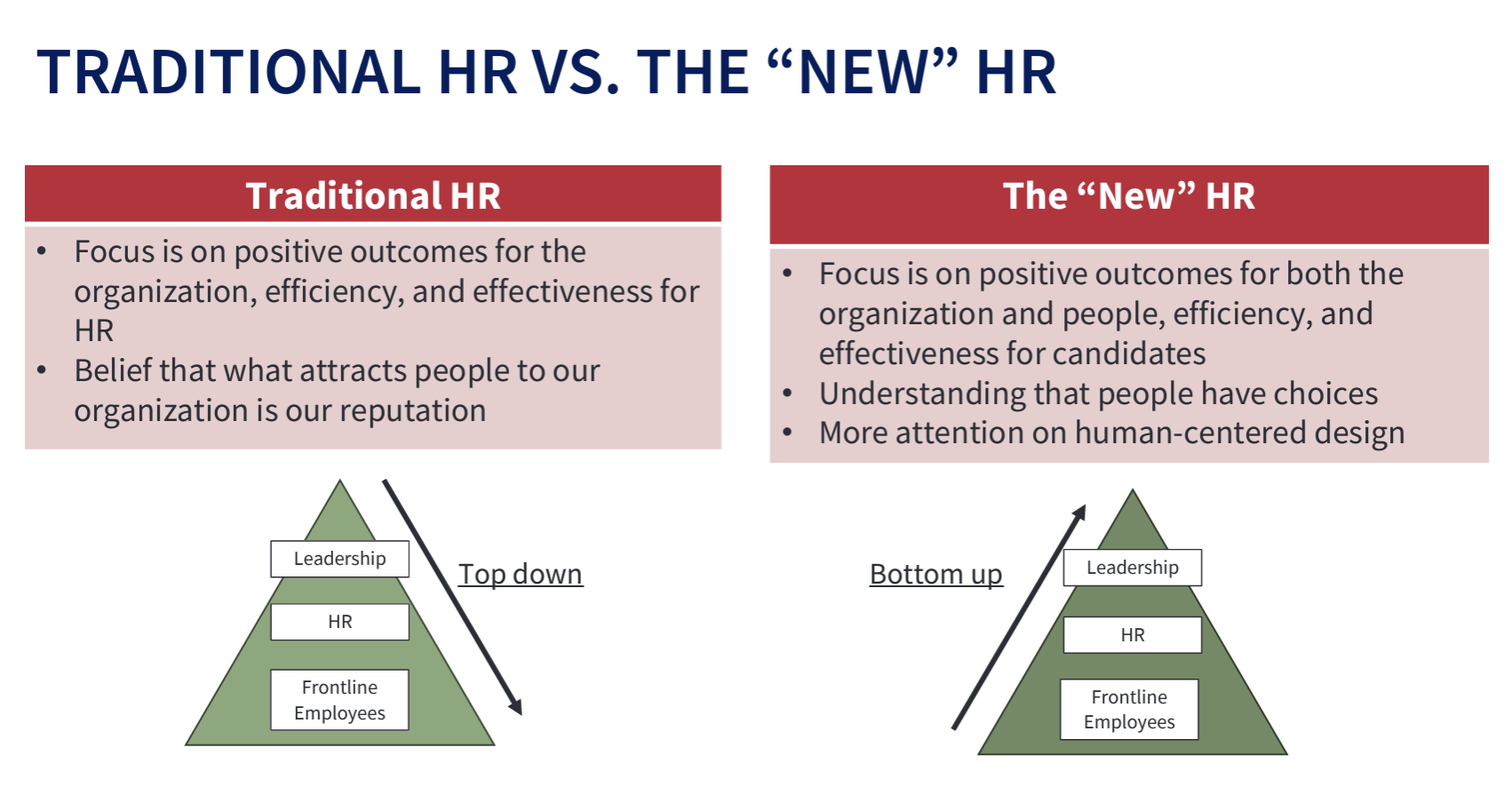From Their Perspective: Why the Candidate Experience Matters
By Kate Heynoski and Taylor Tamang
Numbers don’t lie. In education, 42% of job seekers declined an offer due to poor candidate experience in the hiring process (CareerPlug, 2024). What contributes to a candidate’s experience? Well, many things, but the experience starts with the job posting and the communication channels used to promote your position. It continues with any form of communication they receive from your organization, any engagement they have with staff, as well as the interview and follow-up process.
Dr. Maya Angelou said it best: “I’ve learned that people will forget what you said, people will forget what you did, but people will never forget how you made them feel.”
The candidate’s experience is all about feelings, which can make it hard to describe and hard to understand. And the truth is, there is no formula. A good experience for one person or organization may not work for another. It’s your job as a human capital leader to figure out what works for your ideal candidates and design processes with them and their experience in mind.
This blog post was inspired by a recent training focusing on strategies to address educator workforce needs, specifically attracting and hiring candidates. To go deeper, we encourage you to:
Explore the PowerPoint slide deck
Keep reading for the highlights and key takeaways from the training.
Human-Centered Design
In a job seekers’ market, candidates are often deciding between multiple offers. Organizations can set themselves apart by providing an exceptional recruitment and hiring experience that signals to candidates that the organization values employees. Ensuring your recruitment and hiring processes provide positive experiences for candidates may require you to reframe how you think about those processes.
Lessons From Human-Centered Design
Human-centered design is a problem-solving technique that puts people at the center of the development process, enabling you to create programs or processes that resonate with your candidates. You can improve the candidate experience through the following actions:
Empathize: Understand candidate needs through listening activities. Learn what candidates think and how they feel about your organization and career opportunities. Consider gathering information from candidate surveys, recent/new employee hire surveys, and empathy mapping.
Envision: Engage recent hires in defining desired experiences through journey mapping, SWOT analysis, TOWS analysis, and PESTLE analysis. Then, work together to generate solutions and prioritize them.
Experiment: Iteratively test solutions and incrementally revise candidate experience touchpoints, one at a time. Consider prototyping, pilot programs, and impact-effort matrixes as resources to support your efforts.
By taking a human-centered approach and developing a deeper understanding of your candidates’ wants and needs, you will gain more insight into their perspective.
Quick Wins to Get Started
In an era of competition, an exceptional experience can set you apart. Centering candidates and their needs is an easy way to improve their experience. The best way to improve candidate experience is to focus on touchpoints, which are those moments in the candidate journey where candidates interact directly with your organization.
Here are a few ideas for quick wins to get you started:
Improve your job descriptions.
Factors that can contribute to a negative candidate experience include:
Misleading or vague job descriptions or postings
Postings for jobs that aren’t actually open
Using jargon, language, or idioms that exclude certain groups
To provide sufficient information for candidates, your job postings should include:
A summary of the position tasks
Information on the organization
Minimum requirements (education, years of experience, licensure, etc.)
Required documents for consideration
Physical and/or mental requirements
Compensation, hours, benefits information
How to apply
Touchpoints to explore: District website, social media channels, job boards/postings, networking, and current and past employees.
Improve your application.
When is the last time you went through your district’s job application process yourself? You can improve the job application experience by keeping candidates in mind. Only ask what is truly necessary for the first interview on the application. The rest, you can ask later!
Start to improve your application experience by asking yourself or your team these questions:
Are our applications asking for too much information?
Are they requiring applicants to upload a resume and then type in that same information again?
Are our applications mobile-friendly?
Do applicants ever hear from us once their application is submitted and accepted? How soon after their submission do they get a response?
Communicate the decision.
Initial touchpoints to explore for your communications with applicants include the application tracking system, application, and follow-up communications.
Ultimately, a decision is made on the best candidate to fill your position. Now it’s time to communicate the decision with your candidates—whether they have been hired or rejected. The ways you communicate with the candidate—through emails, phone calls, and/or letters—are additional touchpoints in the candidate’s experience. Be mindful that the candidate wants to be treated respectfully, regardless of the outcome.
Learn More
We encourage human capital leaders in education to take an active role in evaluating recruitment and hiring practices and engaging in discussions with peers. Contact us at HCRC@education.ohio.gov with any questions.


